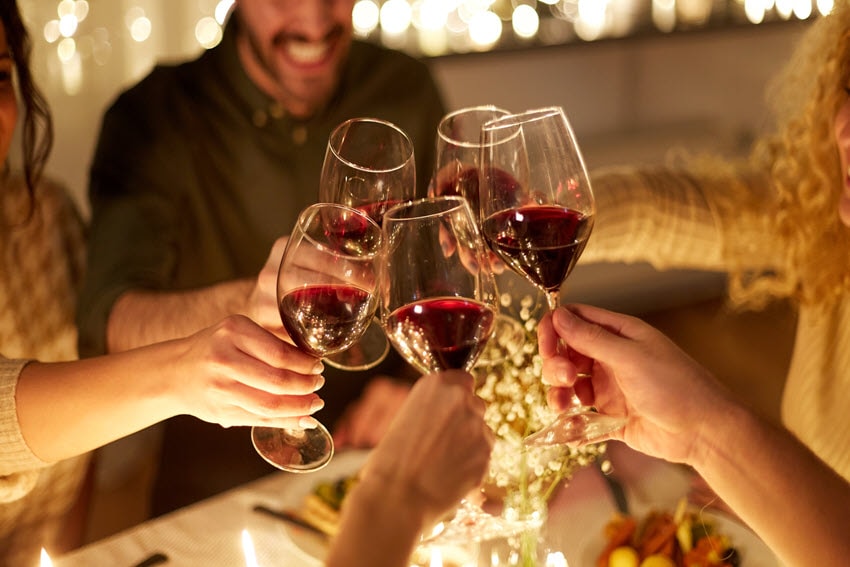Cellaring is the key
While many everyday wines don’t need ageing to be enjoyed, all wines benefit from proper cellaring. Factors such as fluctuating air temperature, lack of humidity and exposure to excessive light all affect your wine and can cause damage in a short period of time. These factors can contribute to undesirable flavor characteristics in your wine, and either speed up or stunt ageing.
To store wines in the best possible environment, wine cabinets are the smart and safest bet. Vintec offers a range of different climate-controlled wine storage options, from 20 bottle capacities to walk-in cellars for over 4,000 bottles.
Serving temperature
Most wine lovers know there are ideal conditions to store your wines, but did you know that the serving temperature also affects your experience? It’s a well-perpetuated myth that red wines should be served at room temperature, but more often than not that’s too hot for red wine.
Hot wines will lose their fruit and floral qualities, and be dominated by heavy characters like spice, oak and alcohol. On the flipside, serving white wine at icy temperatures will strip out a lot of the flavor and accentuate the wine’s acidity.
Glassware and decanting
It’s an undeniable fact that wine-friendly glasses will enhance your enjoyment. Big powerhouse wines are not given the space to breathe and develop served in small glasses. Similarly, fragile and delicate wines become diluted in an oversized, wide-mouthed glass. Invest in good quality glassware to suit the wines you enjoy the most.
There are two main advantages when it comes to decanting. The better-known benefit is to remove sediment from older wines, but aerating your young wines with a vigorous shake in a wine decanter is like speeding up the ageing process.
Wine contains sulphur dioxide, which both protects the wine as it ages but also masks fruit in younger wines. Exposure to oxygen burns off the sulphur, revealing more fruit and therefore more flavour. You only need to compare a decanted wine to a non-decanted wine to see the huge difference it makes to even your every-day drinking wines.
Food and wine pairing
While your personal food tastes are always the most important factor, there are a couple of rules that can help guide you towards truly magical combinations. Forget the traditional concept of red meat/red wine and white meat/white wine, and instead think about it in terms of flavor and texture. Great pairings will either be complimentary or contrasting, but never conflicting.
An obvious example of a complimentary pairing is dessert with dessert wines, but how about matching a spicy Shiraz with sea salt dark chocolate? Or if you typically lean towards a Sauvignon Blanc with your fresh prawns, a citrus-driven Semillon will add freshness and acidity.
When it comes to contrast, you’re looking for balance of flavour. Spicy dishes are well suited to a dry, fruity white like Riesling or Gewürztraminer, and fleshy, creamy salmon has few better matches than an elegant Pinot Noir packed with sour red fruit. They’re the kind of pairings when you can’t decide whether you want to have another bite or take another sip.
And if you simply can’t decide, just remember that champagne goes with almost everything!








